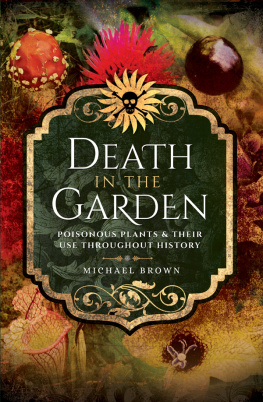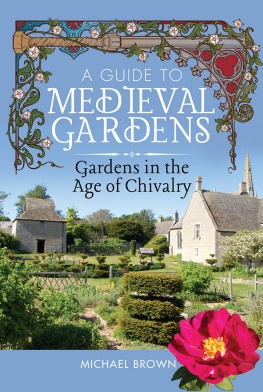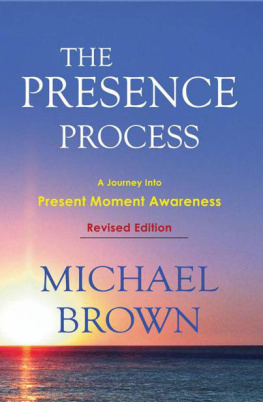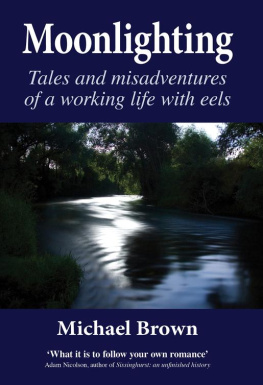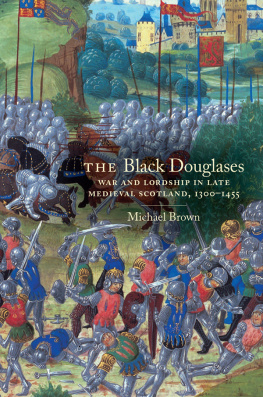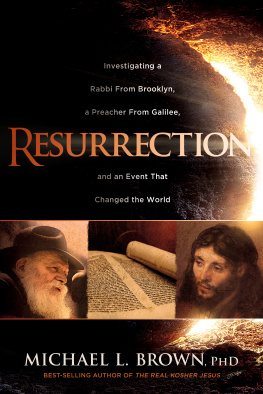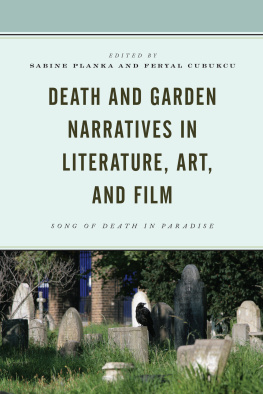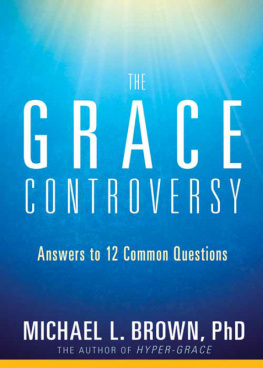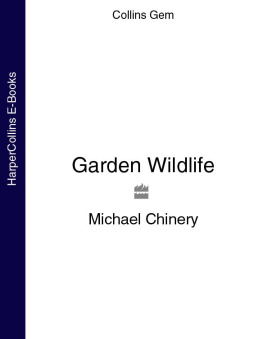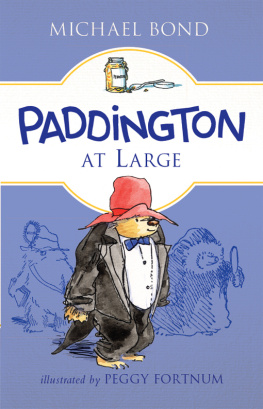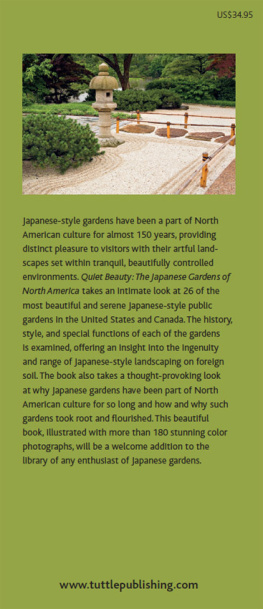Michael Brown - Death in the Garden
Here you can read online Michael Brown - Death in the Garden full text of the book (entire story) in english for free. Download pdf and epub, get meaning, cover and reviews about this ebook. year: 2018, publisher: Pen and Sword, genre: Religion. Description of the work, (preface) as well as reviews are available. Best literature library LitArk.com created for fans of good reading and offers a wide selection of genres:
Romance novel
Science fiction
Adventure
Detective
Science
History
Home and family
Prose
Art
Politics
Computer
Non-fiction
Religion
Business
Children
Humor
Choose a favorite category and find really read worthwhile books. Enjoy immersion in the world of imagination, feel the emotions of the characters or learn something new for yourself, make an fascinating discovery.
- Book:Death in the Garden
- Author:
- Publisher:Pen and Sword
- Genre:
- Year:2018
- Rating:4 / 5
- Favourites:Add to favourites
- Your mark:
- 80
- 1
- 2
- 3
- 4
- 5
Death in the Garden: summary, description and annotation
We offer to read an annotation, description, summary or preface (depends on what the author of the book "Death in the Garden" wrote himself). If you haven't found the necessary information about the book — write in the comments, we will try to find it.
Death in the Garden — read online for free the complete book (whole text) full work
Below is the text of the book, divided by pages. System saving the place of the last page read, allows you to conveniently read the book "Death in the Garden" online for free, without having to search again every time where you left off. Put a bookmark, and you can go to the page where you finished reading at any time.
Font size:
Interval:
Bookmark:

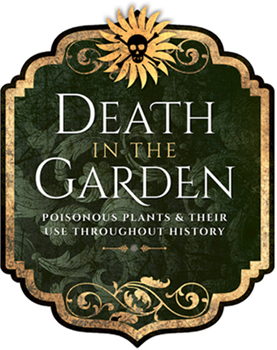

MICHAEL BROWN

First published in Great Britain in 2018 by
PEN & SWORD WHITE OWL
An imprint of
Pen & Sword Books Ltd
Yorkshire - Philadelphia
Copyright Michael Brown
ISBN 9781526708380
eISBN 9781526708403
Mobi ISBN 9781526708397
The right of Michael brown to be identified as Author of this work has been asserted by him in accordance with the Copyright, Designs and Patents Act 1988.
A CIP catalogue record for this book is available from the British Library
All rights reserved. No part of this book may be reproduced or transmitted in any form or by any means, electronic or mechanical including photocopying, recording or by any information storage and retrieval system, without permission from the Publisher in writing.
Pen & Sword Books Ltd incorporates the Imprints of Aviation, Atlas, Family History, Fiction, Maritime, Military, Discovery, Politics, History, Archaeology, Select, Wharncliffe Local History, Wharncliffe True Crime, Military Classics, Wharncliffe Transport, Leo Cooper, The Praetorian Press, Remember When, Seaforth Publishing and Frontline Publishing.
For a complete list of Pen & Sword titles please contact
PEN & SWORD BOOKS LTD
47 Church Street, Barnsley, South Yorkshire, S70 2AS, England
E-mail:
Website: www.pen-and-sword.co.uk
Or
PEN AND SWORD BOOKS
1950 Lawrence Rd, Havertown, PA 19083, USA
E-mail:
Website: www.penandswordbooks.com
Y ou may have picked up this book thinking that it is a murder mystery story. In some ways, you would be correct, because poisonous plants have played a major part in murders, passion and myth.
We imagine that gardens are a place of peacefulness, a refuge from the world, where we will be safe and escape the madness and dangers of the outside world; for the most part, this is true. But the garden has always had connotations of evil lurking within. God created the Garden of Eden and gave Adam the task of tending it. It was a place of beautiful trees and fruits that were good to eat, so whatever other people may say, gardening really is the oldest profession. To save him from becoming lonely, God created a partner from Adams rib. Adam and Eve were happy in the garden until Eve was tempted by a serpent to eat of the forbidden fruit. She in turn tempted Adam and God threw them out of the Garden to henceforth earn their bread by the sweat of their brows.
Gardening became a way to stay alive for the majority of the population who had to grow their own food and that of their masters, but for the very wealthy it became a way to create their own paradise, a reminder of the lost haven of myth; yet the garden could become a prison and safety could be elusive. Some plants could make you very ill, or even kill you, if not used correctly. The fear of being bitten by snakes or other venomous beasts and insects is shown by the frequent antidotes provided by the early herbals. Murder and suicides are written about in stories and plays, which possibly reflected real life. Gardeners used poisons to kill the pests that attacked the plants that they needed for food, and in some cases the same poisons were responsible for the deaths of the gardeners too. Even today, many deaths and injuries are the result of tending to the garden.
P lants generally seem to produce poisons to protect themselves, or parts of themselves, from predators that would eat them. Not every species is affected by specific poisons, and there is a wide range of effect within a species that consumes the poison.
As humans we may ask, What is a poison? Paracelsus said that it is the dose alone that makes something a poison. He was correct, because the answer is not as straightforward as may be imagined. Many poisons have beneficial uses for both humans and animals at the correct dosage. The problem does not end there, as what may be beneficial for some people, may affect others in a very different manner. Some people may be affected quite quickly with a dose of a poison, whereas others may only be affected to a lesser extent, or not affected at all.
The discovery of the practical uses of poisonous plants is now lost in history. How the poisonous properties were discovered and developed will probably never be known. The first discoveries are likely to have been accidental; the refining of their use is also not known, but presumably somebody had to experiment on somebody else, or did somebody make themselves ill, or die, by eating a new plant? Were prisoners of war or those who committed misdemeanours used for experimentation? Observation of wild creatures may have helped, but many species of animal may not be affected by the poisons in the same way as mankind. Many poisonous substances are quickly expelled from the body. The berries of most poisonous plants have a bitter or sharp taste that automatically makes you spit them out in disgust, but not all of them. Perhaps somebody ate the plant and was made ill. If they died then the conclusion was fairly obvious, but they may have survived, what then? Would they have described the effects to their companions who could then be more careful in future or make practical use of the plants properties? How anybody discovered that the roots of Manihot esculenta , Cassava, which contain cyanogenic glycosides, could be made edible is quite amazing. The pearl-like processed root was a staple food when I was a child; we knew it as tapioca.
The use of cassava possibly dates to 10,000 years ago in central Brazil, with the oldest proven growing of the plant for food 1,400 years ago at a Mayan site in El Salvador. In modern times, Africa is the country most reliant on the plant for food. The sweet tubers are the safest; the bitter ones can contain up to fifty times more cyanide and tubers collected during drought conditions are especially toxic. The pre-Columbian peoples of America make flour from the roots. When it is to be used, the flour is mixed with water to make a paste that is rolled thin, spread over a basket and left in the shade for five hours or more, when most of the cyanide will have broken down and the flour is safe to eat. The West African method is to put the tubers in water for a few days so that they begin to ferment and become soft. The peel and central fibres are removed and the remaining pulp pounded, then put in sacks and pressed with stones to remove the water, and with it the cyanide. Once pressed, the pulp can be dried thoroughly in the sun.
Poison has been used on arrow and spear heads from very ancient times, and continues in use for some cultures. Curare, the poison extracted from Strychnos toxifera , and blowpipes are synonymous, and were a mainstay of travellers tales during the Victorian period, especially as the meat was still safe to eat. Poisons have been used to poison water and the fish within it, which is so much quicker, and easier, than fishing with a spear, bow, nets or line.
The fear of being murdered was constant for anybody with power throughout history. An assault of some kind is a very obvious way of removing somebody, but if you wanted to be subtler, poison was very useful. If the poison was administered carefully, perhaps nobody would ever know who the guilty person was. Poison has often been called the womans method of murder, or even that of the less muscular male, but in reality, it was too effective to be not made use of by anyone with ambition. It could be slipped in to a medicine whilst the victim was ill and perhaps most people would believe that the victim had succumbed to their illness. The usual method was to add the poison to the food, so an intermediary could be employed as a sacrificial victim.
Next pageFont size:
Interval:
Bookmark:
Similar books «Death in the Garden»
Look at similar books to Death in the Garden. We have selected literature similar in name and meaning in the hope of providing readers with more options to find new, interesting, not yet read works.
Discussion, reviews of the book Death in the Garden and just readers' own opinions. Leave your comments, write what you think about the work, its meaning or the main characters. Specify what exactly you liked and what you didn't like, and why you think so.

